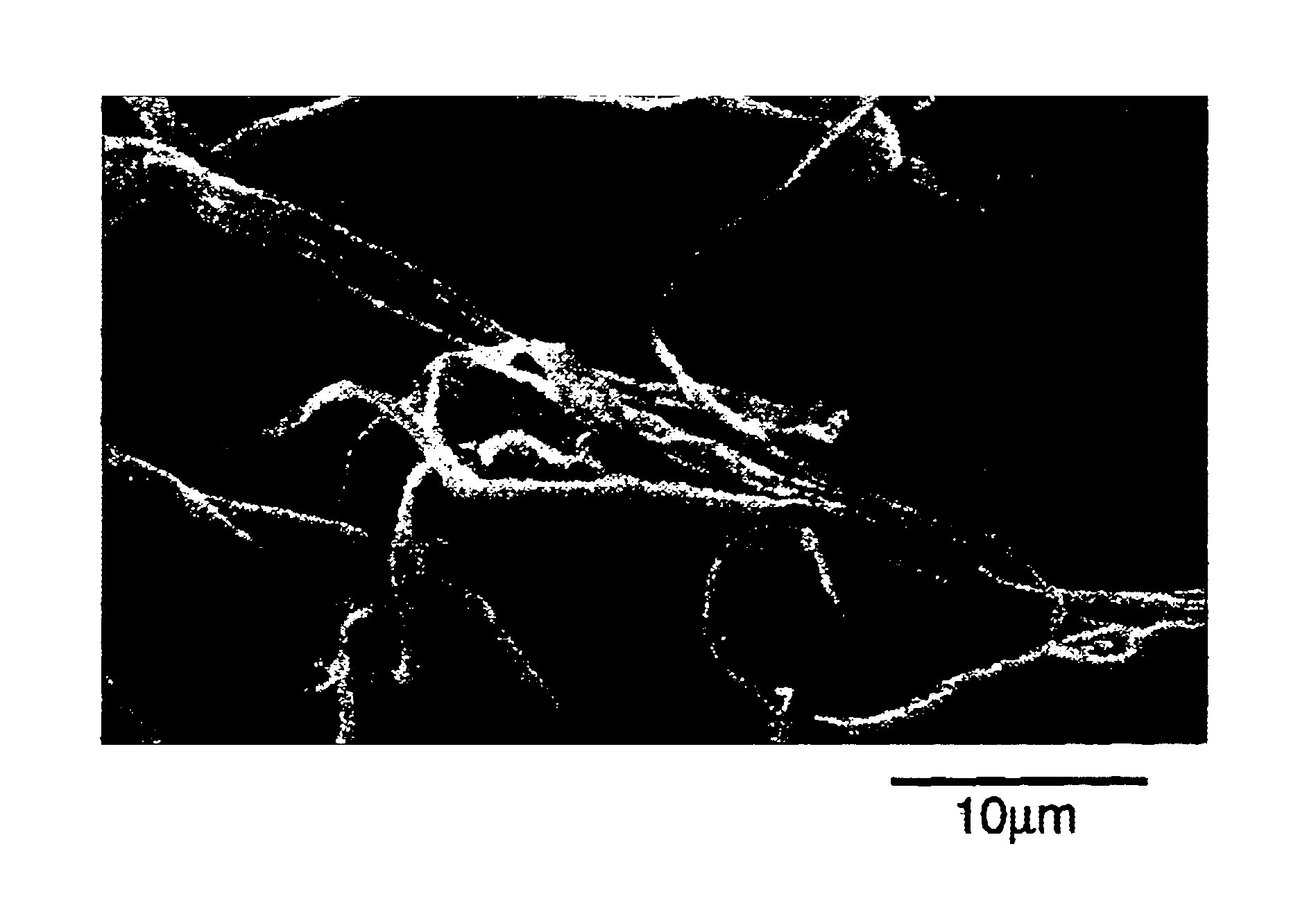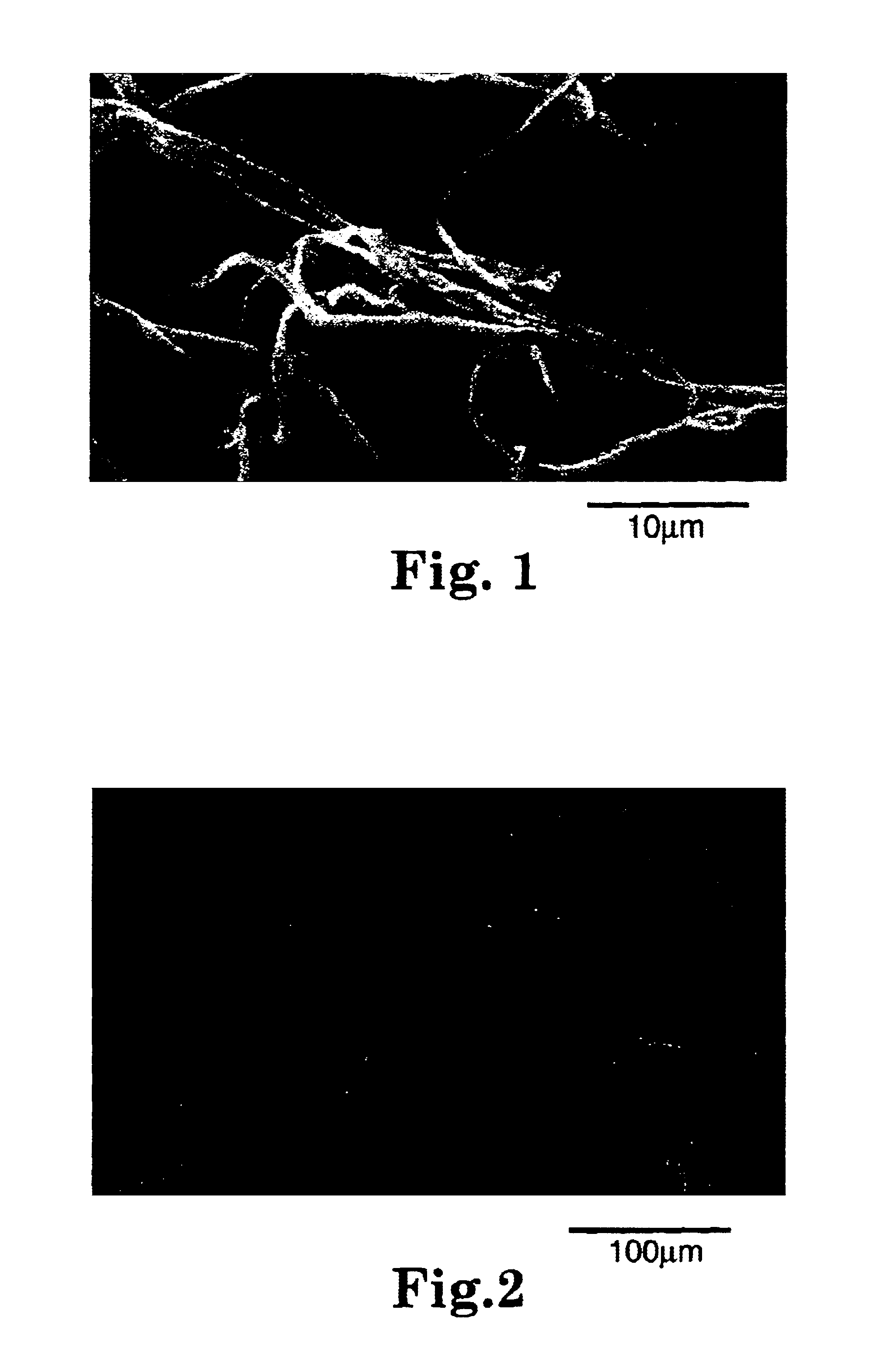Aliphatic polyester microfibers, microfibrillated articles and use thereof
a technology of polyester microfibers and microfibers, applied in the direction of yarn, mechanical equipment, transportation and packaging, etc., can solve the problems of inability to use post-spinning processes such as length orientation, smaller fiber sizes are impractical, and fibers are weak, and achieve the effect of a large surface area
- Summary
- Abstract
- Description
- Claims
- Application Information
AI Technical Summary
Benefits of technology
Problems solved by technology
Method used
Image
Examples
example 1
[0129]The polylactide film was stretched to a draw ratio of 4.5 at 183° F. (84° C.) and stretched in second stage to a total draw ratio of 8.5 at a roll temperature of 261° F. (127° C.). Prior to microfibrillation, the highly oriented film could be split uniaxially by hand. The film was passed 3 times per side at 10 ft / min (3.05 m / min) using a single head hydroentangler (51 holes per inch, 110 micron hole size) at an operating pressure of 1700 psi (11.7 MPa) resulting in a nowoven tape with a plurality of microfibers.
example 2
[0130]The polylactide film was drawn to a draw ratio of 4 at 180° F. (82° C.) followed by a second stage draw to a total draw ratio of 8 at 264° F. (129° C.). The resulting microfibrillar film was processed as in Example 1 except an operating (water) pressure of 1800 psi (12.4 MPa) was used along with a very coarse stainless steel support under the water jets. The final microfibrillated article had a tufted three-dimensional surface.
example 3
[0131]A microfibrillated film was prepared by using a two-stage drawing process as described previously (first draw ratio of 5 at 183° F. (84° C.)) with a total draw ratio of 8.5 (second stage draw temperature of 274° F. (134.4° C.)). The material was microfibrillated as in Example 1 using 4 passes per side at 1600 psi (11.0 MPa) resulting in a soft microfibrillated article have two microfibrillated surfaces.
PUM
| Property | Measurement | Unit |
|---|---|---|
| effective diameter | aaaaa | aaaaa |
| depth | aaaaa | aaaaa |
| diameter | aaaaa | aaaaa |
Abstract
Description
Claims
Application Information
 Login to View More
Login to View More - R&D
- Intellectual Property
- Life Sciences
- Materials
- Tech Scout
- Unparalleled Data Quality
- Higher Quality Content
- 60% Fewer Hallucinations
Browse by: Latest US Patents, China's latest patents, Technical Efficacy Thesaurus, Application Domain, Technology Topic, Popular Technical Reports.
© 2025 PatSnap. All rights reserved.Legal|Privacy policy|Modern Slavery Act Transparency Statement|Sitemap|About US| Contact US: help@patsnap.com



